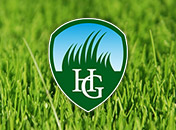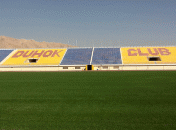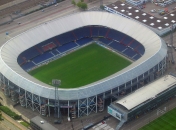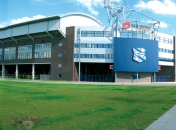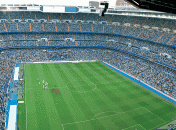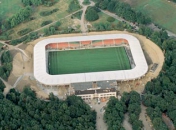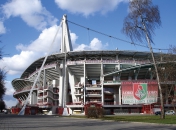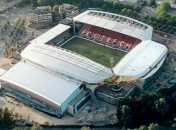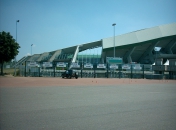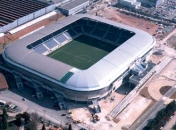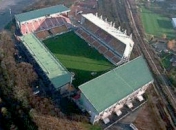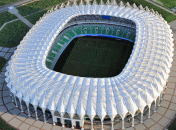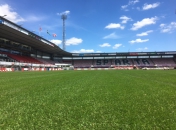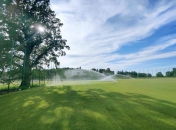Grass diseases/infestations
Grass may be subject to a variety of grass diseases and/or infestations. The types very much depend on the weather. The timely recognition of a grass disease or infestation and making the correct diagnoses can reduce the use of pesticides* to an absolute minimum. Not only does this treatment of grass diseases and infestations generate a financial advantage, it helps saving the environment at the same time.
* Treatment by means of a chemical substance in order to kill grass diseases or infestations is usually not allowed on lawns and fields that are subject to frequent public use. Measures are usually limited to continuous sowing and sprinkling when affected by insects and adjusted fertilization when affected by fungi.
Weeds
Kill weeds with appropriate weed killers.. Download here
Fusarium Nivale
Manifestation:
The damage mainly manifests itself in the autumn, but sometimes also in the spring. Fusarium nivale often starts with small watery patches of 4-6 cm in diameter. The yellow-brown patches feature dark brown edges and can grow to up to 25 cm in size. In the event of high atmospheric humidity, grey/pink fungal fluff appears in the affected areas, while the disease continues to expand underneath. Download here
Mildew (Erysiphe graminis)
This is a mycosis. The leaves are more or less covered in white fungal fluff, which turns grey later on. Black spots can be found in the fungal fluff. The affected leaves die off. Mildew particularly manifests itself in high atmospheric humidity in the spring and late summer. The effects of mildew are reduced as the outside temperature drops. Download here
Melting-out disease (Drechslera poae)
This disease can be recognised by the appearance of small watery brown spots on the leaves which can grow into bigger spots or net blotches, while the tips of the leaves turn yellow. The disease mainly manifests itself in the autumn and spring, when the growing conditions of the grass are not optimal. The leaf base or root collar can also be affected causing plants to die. Mowing and removing the grass in the autumn can reduce damage in the spring. Download here
Black root rot (Gerlachia nivalis; Fusarium spp.)
This fungus is common in the Netherlands and can cause serious damage when widespread. The first symptoms often consist of small yellow-brown to dark-brown wet spots that can expand quickly. The edges may feature a zone with white fungus. The fungus is able to expand under a layer of snow, only revealing the damage when the snow has disappeared. Although the fungus mostly manifests itself during the autumn to spring period, the effects can also develop during e.g. a hot, humid summer. Download here

Brown leaf rust (Puccinia brachypodii)
This disease mainly manifests itself in smooth-stalk meadow grass. The damage can be found spread across the crops from April onwards. Little round heaps of spores are formed on the leaves. Serious damage often includes damage to the leaf base, stem and panicle. Download here
Meadow grass root (Puccinia poarum)
This disease is found mainly in meadow grass. The damage manifests itself in patches (May/June). Meadow grass rust can be recognised by the yellow-orange spots on the leaves, which run across the leaves like stripes. The fungus can also damage the leaf base, stem and panicle. Download here
Crown rust (Puccinia coronata)
Damage by crown rust often occurs from the end of June up to the autumn. It manifests itself in little heaps of orange spores scattered across the leave. This disease does not affect the stem or inflorescence. Crown rust is found mainly in English ryegrass. Download here
Red thread (Laetisaria fuciformis)
The most striking feature of red thread is the presence of pink to red threads in the damaged leaf stalks. The damage occurs mainly in the summer and autumn periods. Red fescue in particular can be damaged by the fungal disease; however, the grass seldom dies. It often occurs following heavy rainfall; the soil lacks nitrogen or the soil is too compact. Download here
Fungi
Two circulars of luxuriantly green grass are formed, one inside the other and sometimes several metres in diameter. The grass between these two circulars dies off. Subsequently, fungi appear on the outer edge of the circular. In the centre of the circular a white fungus sits in the ground. Most fungi cause little damage. Fairy rings disturb the growth of the grass. They have subsoil fungi threads and expand through spores carried by the wind. Ordinary loose fungi appear on the lawn under moist conditions or in nitrogen rich soil. This is a normal natural phenomenon. Download here

Larvae of the Crane Fly
Larvae of the crane fly are grey-blue legless larvae without a clear head. During the day, they hide below ground level and surface at night. They eat both the roots and the plant parts growing above the ground.
Manifestation:
The grass dies, the turf becomes loose and bare patches emerge. The grass shoot is often chewed through near ground level and the roots have been eaten into. Further damage is created by crows and gulls that pick the turf loose when searching for the larvae. Download here
Larvae of the Bibio Lanigerus
Larvae of the Bibio Lanigerus are legless grey-brown larvae with black-brown heads that eat the roots of the grass. They live just below grass level and do not surface. This disease is often caused by using compost. They feed on dead plant remains. If the population becomes too big, they will also eat into living plants.
Manifestation:
Roots and plant parts are eaten into which is followed by dead patches in the grass. Download here
White grub
White grubs are beetle larvae of the anomala dubia family (cock chafer, summer chafer and garden chafer). They are off-white larvae with clear orange-brown heads, six legs and a sack-shaped yellow-white rump and eat into the grass roots. In the event of serious damage to the grass, sections can be lifted like a turf.
Manifestation:
Grass roots will have been eaten into and the lawn will come loose from the subsoil. In the period from July to September, the damage can be such that entire sections of the lawn die off. Download here
Earthworms
Earthworms create little muddy sand heaps that are formed on the lawn in the spring and autumn.
Earthworms do not damage the lawn. They are useful organisms that stimulate soil structure. The little heaps they form can be easily levelled Download here




 English
English Nederlands
Nederlands Deutsch
Deutsch Español
Español Français
Français Italiano
Italiano Polski
Polski Русский
Русский








